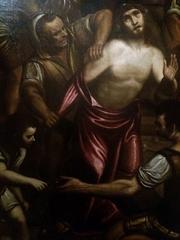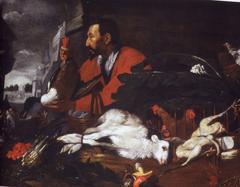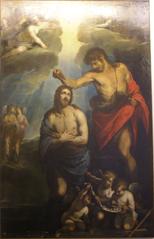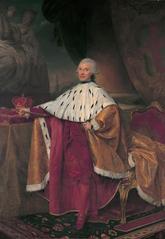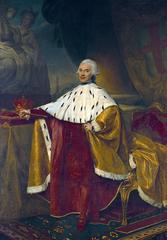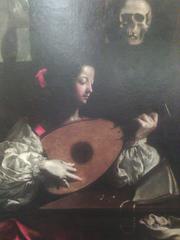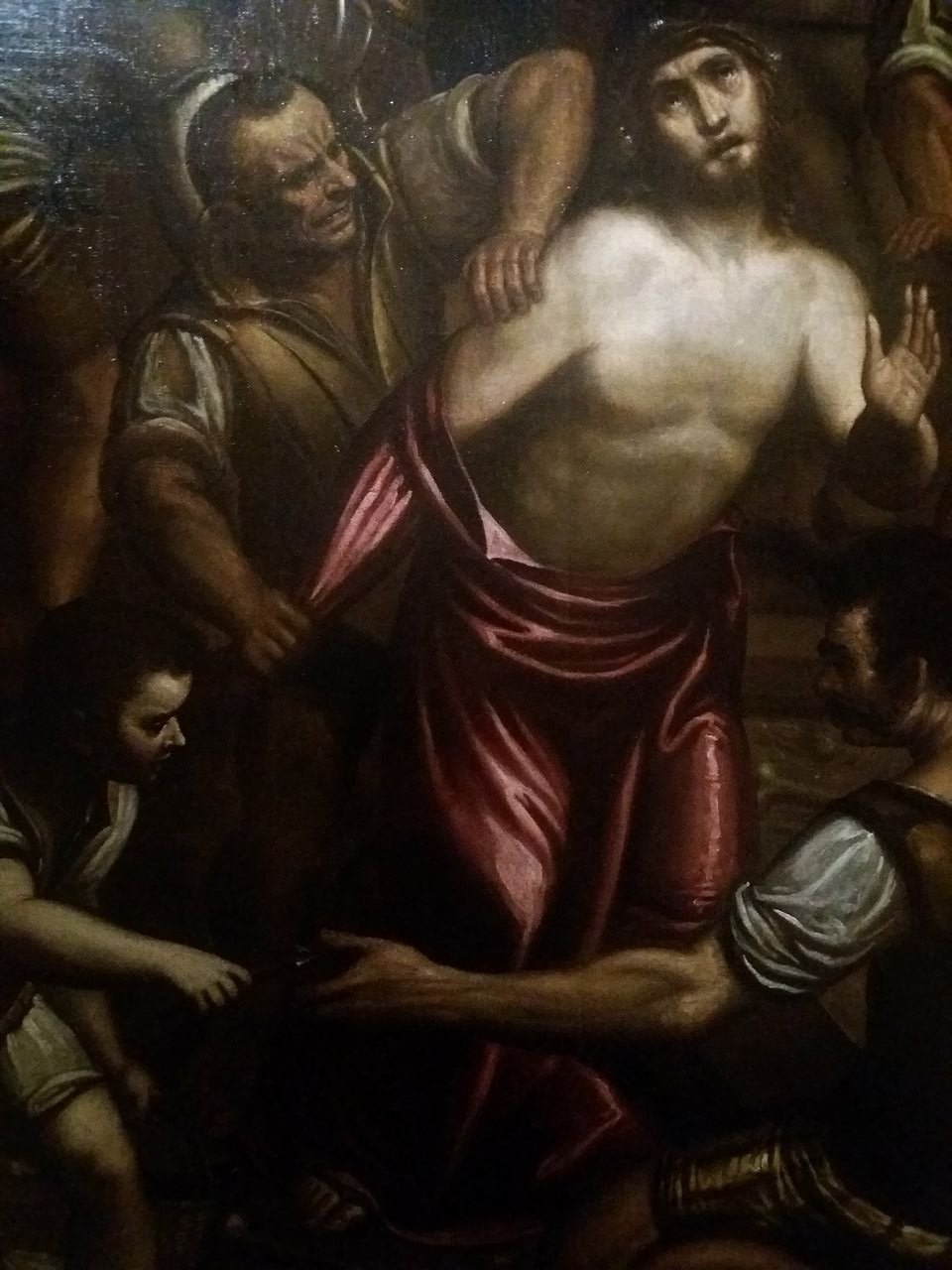
Palazzo Bianco Genoa: Visiting Hours, Tickets, and Comprehensive Guide to Historical Sites
Date: 14/06/2025
Introduction: The Significance of Palazzo Bianco in Genoa
Located on Via Garibaldi in Genoa’s historic center, Palazzo Bianco is a premier example of Renaissance and Baroque art and architecture. Commissioned in the early 16th century by Luca Grimaldi, a distinguished member of Genoa’s aristocracy, the palace epitomizes the city’s emergence as a powerful maritime and financial hub. Today, Palazzo Bianco serves as a major public museum, housing a wealth of European paintings and decorative arts from the 12th to the 18th centuries. As part of the Strada Nuova Museums complex—along with Palazzo Rosso and Palazzo Doria-Tursi—and included in the UNESCO World Heritage-listed Palazzi dei Rolli, Palazzo Bianco is central to Genoa’s civic and artistic identity. Visitors can experience an array of masterpieces by artists such as Caravaggio, Van Dyck, Strozzi, and Veronese, all within the palace’s striking Baroque façade and frescoed interiors.
This detailed guide provides everything you need to know: visiting hours, ticketing, accessibility, guided tours, and tips for exploring nearby attractions, ensuring you make the most of your visit to Genoa’s cultural heart. For up-to-date details and bookings, the official Musei di Genova website is recommended.
(Italy for Movies) (Wikipedia)
Table of Contents
- Introduction
- Origins and Early Construction
- Ownership and 18th-Century Renovations
- UNESCO World Heritage and Palazzi dei Rolli
- 19th-Century Civic Transition
- Wartime Damage and Restoration
- Art Collections and Highlights
- Architectural Features and Gardens
- Visiting Hours, Tickets, and Accessibility
- Guided Tours and Visitor Services
- Nearby Attractions
- Frequently Asked Questions (FAQ)
- Conclusion and Visitor Tips
- Sources
Origins and Early Construction (16th Century)
Palazzo Bianco, also known as Palazzo Luca Grimaldi or Palazzo Brignole Sale, was constructed between 1530 and 1540 for Luca Grimaldi. The initial design reflected the modest elegance typical of the early Renaissance, set on what was then the city’s periphery before the development of Strada Nuova (now Via Garibaldi), which later became the epicenter of Genoa’s noble residences. The palace’s construction coincided with a period of urban renewal, as Genoa’s elite built grand homes that would form the renowned Palazzi dei Rolli.
(it.wikipedia) (italyformovies.com)
Ownership Changes and 18th-Century Transformation
After remaining with the Grimaldi family for over a century, Palazzo Bianco was sold to the Franchi de Candia family in 1658, and subsequently acquired by Maria Durazzo Brignole-Sale in 1711. She initiated a major transformation, entrusting architect Giacomo Viano to remodel the palace between 1714 and 1716. The renovation included a new, light-colored (hence “Bianco”) façade, a reoriented entrance facing the prestigious Strada Nuova, and richly decorated Baroque interiors.
(it.wikipedia)
Palazzi dei Rolli and UNESCO World Heritage Status
Palazzo Bianco is one of the Palazzi dei Rolli, a unique network of aristocratic homes designated by the Republic of Genoa to host important guests. This system symbolized Genoa’s republican spirit and the importance of its noble families. In 2006, the palace and 41 other residences on the Strade Nuove gained UNESCO World Heritage status, recognizing their exceptional role in Renaissance and Baroque urban development.
(museidigenova.it) (italyformovies.com)
19th-Century Transformation: From Private Residence to Civic Museum
The Brignole-Sale family owned Palazzo Bianco until the late 19th century. In 1884, Maria Brignole-Sale De Ferrari, Duchess of Galliera, bequeathed the palace to Genoa with the stipulation it become a gallery for public benefit. The Palazzo Bianco Gallery officially opened in 1892, its initial collection comprising family holdings, later enriched by acquisitions and donations.
(it.wikipedia)
Wartime Damage and Postwar Restoration
During World War II, Allied bombing in 1942 caused extensive damage to Palazzo Bianco. The postwar restoration, led by architect Franco Albini and curator Caterina Marcenaro, became a milestone in Italian museum design. Their approach balanced historical preservation with contemporary needs, and the palace reopened as a modern museum in 1950.
(academia.edu)
Art Collections and Highlights
Palazzo Bianco’s collection, part of the Strada Nuova Museums, is noted for its chronological and thematic richness, focusing on Genoese, Italian, Flemish, Spanish, and French art from the 12th to 18th centuries. Notable artists include:
- Genoese Masters: Bernardo Strozzi (“The Cook,” “Saint Cecilia”), Giovanni Benedetto Castiglione (Il Grechetto, “Noah’s Sacrifice”), Valerio Castello (“Adoration of the Magi”).
- Italian Renaissance and Baroque: Filippino Lippi (“Madonna and Child with Saints”), Paolo Veronese (“Susanna and the Elders”), works by Orazio and Artemisia Gentileschi.
- Flemish and Dutch School: Anthony van Dyck (“Portrait of Elena Grimaldi Cattaneo”), Jan Roos (“Fruit and Vegetable Market”), Joos van Cleve (“Lamentation over the Dead Christ”).
- Spanish and French School: Francisco de Zurbarán (“Saint Francis”), Simon Vouet (“Saint Agatha”).
- Masterpieces: Attributed “Ecce Homo” by Caravaggio, “Portrait of a Lady” by Lucas Cranach the Elder, “Adoration of the Shepherds” by Bartolomé Esteban Murillo.
The collection also includes sculptures, decorative arts, and period furnishings, with select works such as Canova’s “Maddalena Penitente” displayed in the adjacent Palazzo Tursi.
(museidigenova.it) (italyformovies.com)
Architectural Features and Gardens
Palazzo Bianco’s architecture reveals its layered history: an 18th-century Baroque façade, lavish interior rooms with frescoes and stucco, and a tranquil lower garden. The upper garden, accessible via Palazzo Tursi, retains remnants of the Gothic church of San Francesco di Castelletto, with arcades and columns integrated into the palace complex.
(it.wikipedia)
Visiting Hours, Tickets, and Accessibility
-
Visiting Hours:
- Summer (March 26–October 6): Tues–Fri 9:00–19:00; Sat–Sun 10:00–19:30
- Winter (from October 8): Tues–Fri 9:00–18:30; Sat–Sun 9:30–18:30
- Closed Mondays and select holidays (WhichMuseum).
-
Tickets:
- Full (Palazzo Bianco & Rosso): ~€10
- Reduced (EU citizens 18–25): ~€5
- Free for children under 18, Genoa residents, and on certain cultural days.
-
Purchase: Tickets are available online via the official website and at the entrance. Booking ahead is advised during peak times and special exhibitions.
-
Accessibility: The museum is wheelchair accessible with ramps and elevators, though some historic areas may pose challenges. Contact the museum in advance if you require special assistance.
(Musei di Genova Accessibility)
Guided Tours and Visitor Services
- Guided Tours & Audio Guides: Available in multiple languages; bookable on-site or online.
- Facilities: Restrooms, cloakroom, and museum shop available; no café inside, but many options nearby.
- Languages: Most labels in Italian; audio guides and guidebooks recommended for other languages.
- Photography: Non-flash photography is permitted in most areas; check restrictions for temporary exhibitions.
Nearby Attractions
Palazzo Bianco is part of the UNESCO-listed Via Garibaldi, home to other major palaces:
- Palazzo Rosso and Palazzo Doria-Tursi (Strada Nuova Museums complex)
- Genoa Cathedral (Cattedrale di San Lorenzo)
- Piazza De Ferrari and the medieval old town
- Aquarium of Genoa and the historic port area
The area is easily explored on foot; public transport and parking are available but walking is recommended due to the pedestrian nature of the center.
Frequently Asked Questions (FAQ)
Q: What are the exact visiting hours?
A: See the “Visiting Hours” section above for seasonal details. Closed Mondays.
Q: How much are tickets?
A: Full ~€10, reduced ~€5, some free categories; see above for details.
Q: Is the museum accessible to people with disabilities?
A: Yes, with elevators and ramps; contact in advance for special needs.
Q: Are guided tours available?
A: Yes, guided and audio tours in multiple languages.
Q: Can I take photos inside?
A: Non-flash photography is generally allowed; check for any restrictions.
Q: What else should I visit nearby?
A: Palazzo Rosso, Palazzo Doria-Tursi, Genoa Cathedral, Piazza De Ferrari, and the Old Port.
Conclusion and Visitor Tips
Palazzo Bianco is a cornerstone of Genoa’s artistic and civic heritage, blending centuries of history, architecture, and fine art. Its transformation from a noble residence to a public museum has ensured the preservation and democratization of one of Italy’s most significant art collections. With accessible facilities, engaging exhibitions, and an ideal location amid Genoa’s UNESCO-listed palaces, Palazzo Bianco is an essential stop for anyone seeking to understand the city’s legacy.
For the latest information, special events, and ticketing, consult the official Musei di Genova website. Enhance your cultural journey by exploring the Strada Nuova Museums complex, and consider using tools like the Audiala app for additional visitor resources and audio guides.
Sources and Further Reading
- Musei di Genova – Official Website
- Italy for Movies – Palazzo Bianco Genoa
- Palazzo Bianco – Wikipedia (Italian)
- Finestre sull’Arte – Genoa City Museums
- Academia.edu – Palazzo Bianco and Rosso Restoration
- WhichMuseum – Palazzo Bianco
- InBetween Explorations – Temporary Exhibitions
- Trips & Leisure – Genoa Attractions
Alt text suggestions for images to be added:
- “Palazzo Bianco Genoa façade showcasing Baroque architecture”
- “Interior view of Palazzo Bianco with decorative plasterwork and frescoes”
- “Visitor enjoying the garden terrace overlooking Palazzo Rosso in Genoa”
- “Map showing location of Palazzo Bianco on Via Garibaldi in Genoa”
